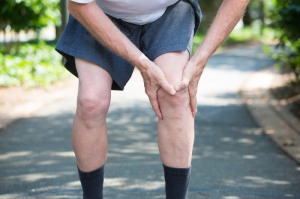by
Lauren Dubinsky, Senior Reporter | March 01, 2017
Researchers from Mayo Clinic have developed a 3-D-printed bioabsorbable scaffold that can reconstruct ruptured anterior cruciate ligaments in the knee and deliver a protein that promotes bone regeneration.
Tendon graft reconstruction is the conventional method for treating ACL ruptures, and interference screw fixation is typically performed to fix the graft in place. But the metallic interference screws can damage the graft or sutures, disrupt MR exams and need to be removed during any subsequent revision surgeries.
Bioabsorbable interference screws were developed as an alternative to metallic screws and have been found to have the same fixation strength and clinical results. However, bioabsorbable screws degrade and don't completely fill the bone, which affects the integrity of the graft fixation.



Ad Statistics
Times Displayed: 1388
Times Visited: 8 Keep biomedical devices ready to go, so care teams can be ready to care for patients. GE HealthCare’s ReadySee™ helps overcome frustrations due to lack of network and device visibility, manual troubleshooting, and downtime.
The research team proposed a bioabsorbable scaffold to improve bone filling after bioabsorbable implant fixation. Those scaffolds can be created with the use of 3-D laser stereolithography printing.
In a study published in the journal
Tissue Engineering, the team tested the strength of the scaffold using a rabbit cadaver. They also compared four approaches for reducing the initial burst release of recombinant human bone morphogenetic protein 2 (rhBMP-2) and extending its release over time.
They coated the scaffolds with a synthetic bone mineral and delivered radiolabeled rhBMP-2 to four different experimental groups. Those groups included poly microspheres only, microspheres and collagen, collagen only and saline only.
The team measured the release of rhBMP-2 at day one, two, four, eight, 16 and 32. They found that the microsphere delivery groups had a smaller burst release, and released a smaller percentage of rhBMP-2 over 32 days than the collagen- and saline-only groups.
In conclusion, the scaffold was strong enough for the rabbit ACL reconstruction model, and a synthetic bone mineral coating with microspheres lessened the initial burst and cumulative release of rhBMP-2.
Going forward, more research is needed to evaluate the scaffold’s fixation strength and bone-filling capabilities in a living animal model, compared to traditional bioabsorbable implants.
"This work is a good example of the fusion of technologies — controlled release drug delivery and 3-D printing," Dr. Peter C. Johnson, co-editor-in-chief of
Tissue Engineering, said in a statement.

